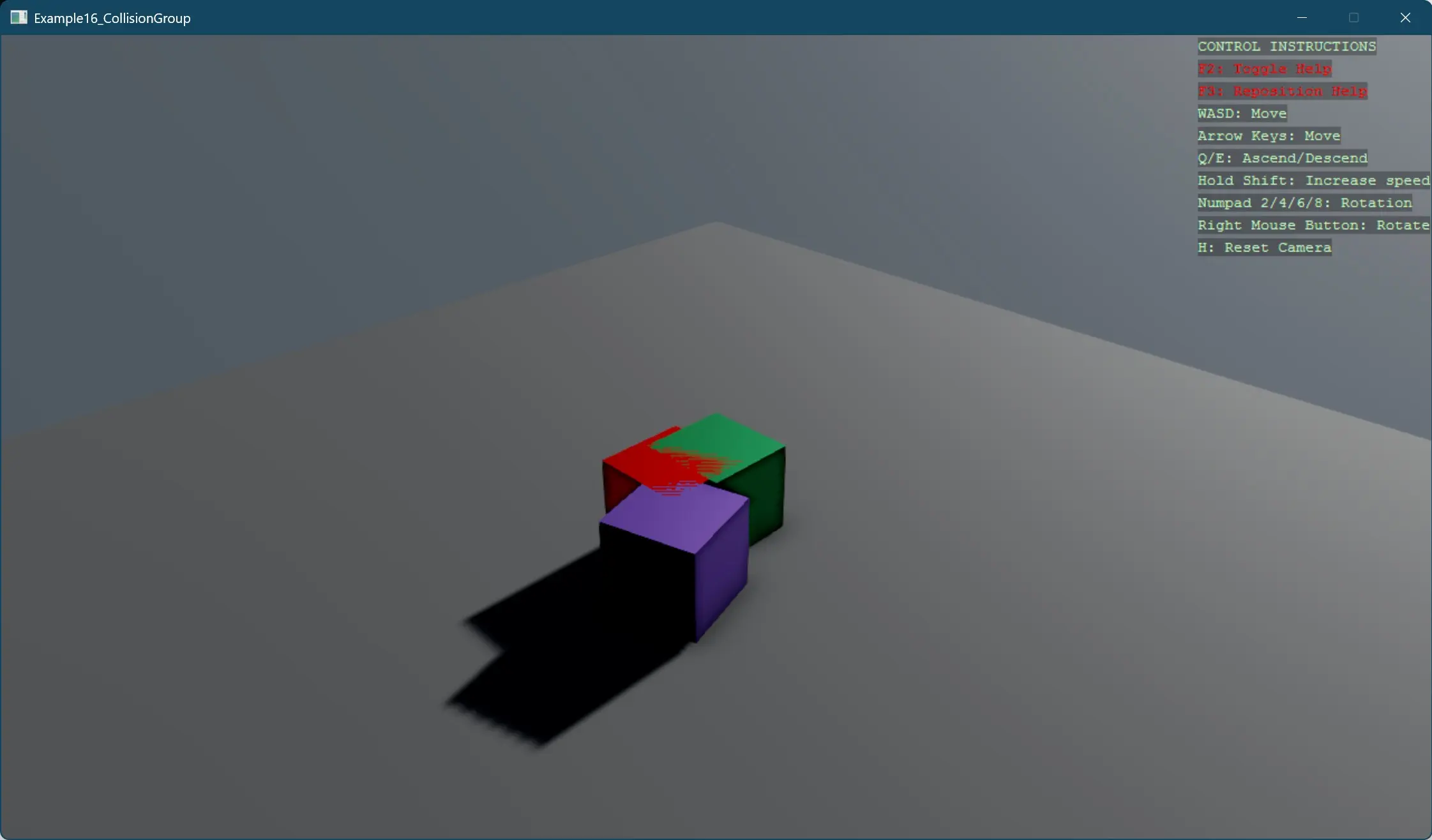Collision Group
This example demonstrates how to create a simple scene with two players and an enemy entity and set up collision groups to control which objects can collide with each other.
The Program.cs file shows how to:
- Define collision groups with specific IndexA values to control collision behaviors
- Create a 3D scene with colored cube entities representing players and an enemy
- Apply different collision group settings to each entity
- Demonstrate the rule where objects with IndexA value differences greater than 2 will collide
In this example, three collision groups are created:
- Two player collision groups (green and purple cubes) with IndexA values of 0 and 2
- One enemy collision group (red cube) with an IndexA value of 1
This configuration ensures that:
- The players will collide with each other because the difference between their IndexA values is 2
- The enemy entity won't collide with either player because the difference between their IndexA values is 1
Note
This example requires the additional NuGet packages Stride.CommunityToolkit.Bepu, Stride.CommunityToolkit.Skyboxes and Stride.CommunityToolkit.Windows. Make sure to install all before running the code.

View on GitHub.
using Stride.BepuPhysics;
using Stride.BepuPhysics.Definitions;
using Stride.CommunityToolkit.Bepu;
using Stride.CommunityToolkit.Engine;
using Stride.CommunityToolkit.Rendering.ProceduralModels;
using Stride.CommunityToolkit.Skyboxes;
using Stride.Core.Mathematics;
using Stride.Engine;
// This example demonstrates how to create a simple scene with two players and an enemy entity
// and set up collision groups to control which objects can collide with each other.
// Define collision groups to control which objects can collide with each other
// Objects within the same group can't collide with each other, however, if IndexA is used, the objects collide with each other if the difference is more than 2
// In this example, the players will collide with each other because the difference between their IndexA values is 2
// The enemy entity (red box) won't collide with the players because the difference between their IndexA values is 1
var playerCollisionGroup1 = new CollisionGroup { Id = 1, IndexA = 0 };
var playerCollisionGroup2 = new CollisionGroup { Id = 1, IndexA = 2 };
var enemyCollisionGroup = new CollisionGroup { Id = 1, IndexA = 1 };
using var game = new Game();
game.Run(start: Start);
// Sets up the initial scene with players and enemies
void Start(Scene scene)
{
game.SetupBase3DScene();
game.AddSkybox();
// Create player entities
CreateEntityWithGroup("Player1", Color.MediumSeaGreen, new Vector3(0, 0.5f, 0), scene, playerCollisionGroup1);
CreateEntityWithGroup("Player2", Color.MediumPurple, new Vector3(0.5f, 4, 0.7f), scene, playerCollisionGroup2);
// Create enemy entity
CreateEntityWithGroup("Enemy", Color.Red, new Vector3(-0.1f, 12, 0.5f), scene, enemyCollisionGroup);
}
void CreateEntityWithGroup(string name, Color color, Vector3 position, Scene scene, CollisionGroup collisionGroup)
{
var enemy = CreateEntity(name, color, position);
var body = enemy.GetComponent<BodyComponent>();
body!.CollisionGroup = collisionGroup;
enemy.Scene = scene;
}
Entity CreateEntity(string name, Color color, Vector3 position)
{
var entity = game.Create3DPrimitive(PrimitiveModelType.Cube, new()
{
EntityName = name,
Material = game.CreateMaterial(color),
});
entity.Transform.Position = position;
return entity;
}